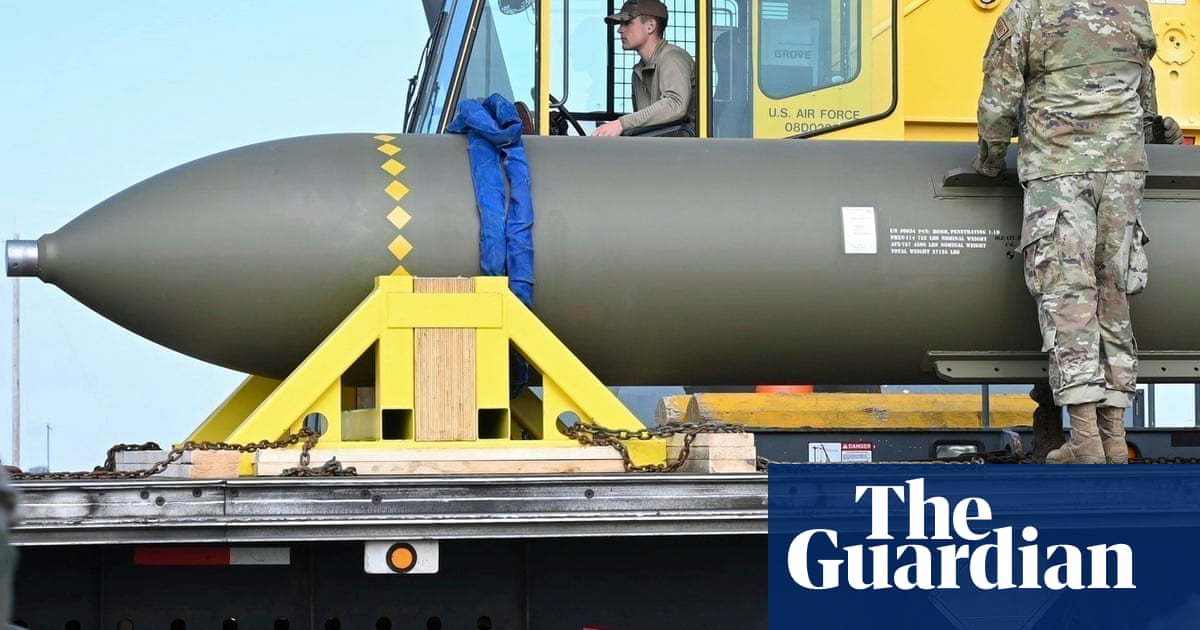 |
|
The article delves into former President Donald Trump's considerations regarding a potential military strike against Iran, specifically focusing on the Fordow uranium enrichment facility. The crux of the matter lies in Trump's apparent reservations about the effectiveness of the GBU-57, a massive 30,000-pound “bunker buster” bomb, in completely destroying the deeply buried facility. According to sources familiar with the deliberations, Trump sought assurances that the GBU-57 would guarantee the destruction of Fordow before authorizing any strikes. However, he was reportedly told that even a barrage of GBU-57s might only collapse tunnels and bury the facility under rubble, rather than completely eliminating it. This lack of certainty, coupled with the possibility that the mere threat of US military action might prompt Iran to engage in negotiations, led Trump to hold off on authorizing a strike.
The article highlights a debate within the Pentagon regarding the GBU-57's capabilities against Fordow. Some defense officials, briefed by the Defense Threat Reduction Agency (DTRA), suggested that only a tactical nuclear weapon could reliably destroy the facility due to its depth. Israeli intelligence estimates Fordow to be buried as deep as 300 feet (90 meters) underground. The DTRA's assessment reportedly indicated that conventional bombs, including the GBU-57, might not penetrate deep enough to neutralize the facility completely. While softening the ground with conventional explosives followed by a tactical nuclear strike was proposed as a theoretical option, the article emphasizes that Trump was not considering the use of nuclear weapons against Fordow. This scenario was not even presented to Trump by his defense secretary Pete Hegseth and Gen Dan Caine. The officials who received the briefing about the GBU-57 also heard that the destruction caused by conventional means would not be permanent, and the Fordow facility would be rebuilt quickly.
The article underscores the strategic importance of taking Fordow offline, either through diplomacy or military action. The International Atomic Energy Agency (IAEA) has found that the facility enriched uranium to 83.7%, which is dangerously close to the 90% needed for weapons-grade material. Preventing Iran from acquiring nuclear weapons is a primary concern, and Fordow is seen as a key obstacle in that effort. The article also notes that the United States is uniquely positioned to carry out a military strike against Fordow, as Israel lacks both the necessary ordnance and the aircraft to deliver such a strike. The GBU-57, while designed to destroy underground bunkers, has never been used in a comparable situation, and the article suggests that the unique characteristics of Fordow, being buried inside a mountain, present a significant challenge to its effectiveness. A former DTRA deputy director, Maj Gen Randy Manner, is quoted as saying that the GBU-57's limitations meant that Fordow could be rebuilt relatively quickly. He said that it might set the program back six months to a year. He compared the strike to “sounding good for TV, but it’s not real.”
The challenges associated with using the GBU-57 extend beyond its penetrating power. The bomb requires a B2 bomber, air superiority, and a solid GPS signal to lock onto its target. While Israel claims to have established air superiority over Iran, a successful strike would still require neutralizing GPS jammers and other defenses in advance. Furthermore, the bomb must penetrate deep enough into the ground to effectively neutralize the facility. Iran built the Fordow facility underground precisely to protect it from aerial attacks, learning from past experiences such as Israel's 1981 bombing of a nuclear facility near Baghdad, which was located above ground. The article mentions that Israel has explored alternative plans to destroy Fordow without US assistance, including a proposal to send commandos in helicopters to fight their way into the facility and blow it up – an option that Trump reportedly dismissed. However, it is understood that to make the destruction more permanent, the Fordow facility would have to be destroyed by a bomb far more powerful than the GBU-57.
The complexities surrounding a potential strike on Fordow highlight the delicate balance between military options and diplomatic considerations in addressing Iran's nuclear program. The article suggests that Trump's caution stemmed from a combination of doubts about the GBU-57's effectiveness and a desire to explore diplomatic solutions. The article also hints at an internal debate within the US defense establishment regarding the capabilities and limitations of existing military options against deeply buried nuclear facilities. The article serves as a reminder of the significant challenges and potential consequences associated with any military action against Iran, particularly in relation to its nuclear program. This also raises questions about the future of the United States' involvement in Iran, and whether or not a deal is possible under the current leadership in Iran. The article also raises questions about the reliance on bunker buster bombs that have never been used. The need to find a way to destroy or at least render useless the nuclear program in Iran remains a high priority for both the US and Israel, which have expressed similar views on the matter. The questions that remain are how, and at what cost.
Source: Trump caution on Iran strike linked to doubts over ‘bunker buster’ bomb, officials say
